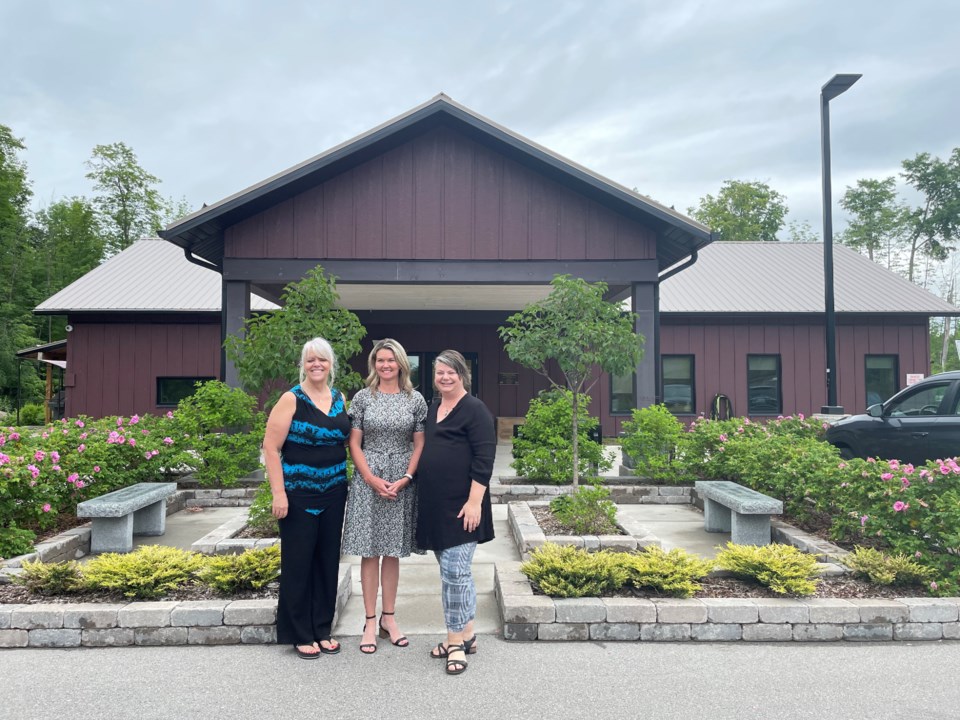NEWS RELEASE
SIMCOE NORTH MPP JILL DUNLOP
*************************
As part of Your Health: A Plan for Connected and Convenient Care, the Ontario government is expanding access to palliative care services in Simcoe North.
This is part of Ontario’s $147.4-million investment over three years in communities across the province to connect more Ontarians to comfortable and dignified palliative care close to home for people living with progressive, life-threatening illness and their loved ones.
“The province recognizes the important care hospices across the province provide in the final days of our loved ones’ lives,” said Jill Dunlop, MPP for Simcoe North. “This additional funding for Hospice Huronia Tomkins House, Mariposa House Hospice, and Hospice Orillia is essential in our community to help support individuals and families during a very difficult time.”
A portion of this funding will be used to connect people to more palliative and end-of-life services across Ontario including:
- Grief and bereavement supports that help families and caregivers who are grieving the loss of a loved one;
- Advance care planning to help patients and families prepare for future health-care decisions; and
- Perinatal palliative care programs that provide specialized grief, bereavement, and peer support that help parents prepare for the loss of their infant.
In addition to expanding palliative care services across the province, this investment will provide existing residential hospice beds in Orillia and Midland with $350,500 in additional funding for Hospice Huronia Tomkins House and Mariposa House Hospice over the next two years for nursing, personal support, and other services delivered to patients. Ontario is investing over $53.8 million over the next two years to increase funding by 45 per cent for all approved hospice beds in Ontario, plus an additional increase for hospice beds in small facilities.
“Hospice Huronia Tomkins House and Mariposa House Hospice are so grateful to receive this funding increase. We provide quality end-of-life and bereavement care to members of our community,” said Debbie Kesheshian, executive director at Hospice Huronia Tomkins House in Penetang.
“The hospice residence services we provide help to fill a gap by ensuring a safe, comfortable, home-like setting with 24/7 care, available at no cost,” added Annalise Stenekes, executive director at Mariposa House Hospice in Severn.
“We rely on the generosity of our community members to make this happen, and this funding increase means greater sustainability for the communities of Simcoe North. We are so pleased that the Ministry of Health shares our vision that everyone deserves a hospice palliative approach to care.”
The provincial investment also includes $10.9 million in multi-year funding to continue operations of 23 additional residential hospice beds through the 2023-24, 2024-25, and 2025-26 fiscal years.
“When people approach the end of their life, they deserve to know that they can remain in their community, near loved ones,” said Sylvia Jones, deputy premier and minister of health. “Expanding access to end-of-life care in Ontario communities will provide patients and their families with additional choices, helping to ensure they stay close to home in a familiar setting, with the specialized care they need.”
With Your Health: A Plan for Connected and Convenient Care, the province is making it easier for people and their families to connect to the care they need throughout their entire life, whether that’s by expanding access to services in their home or community, or giving them the choice to book or take an appointment virtually, to ensure hospital and long-term beds are available when it is needed most.
*************************



